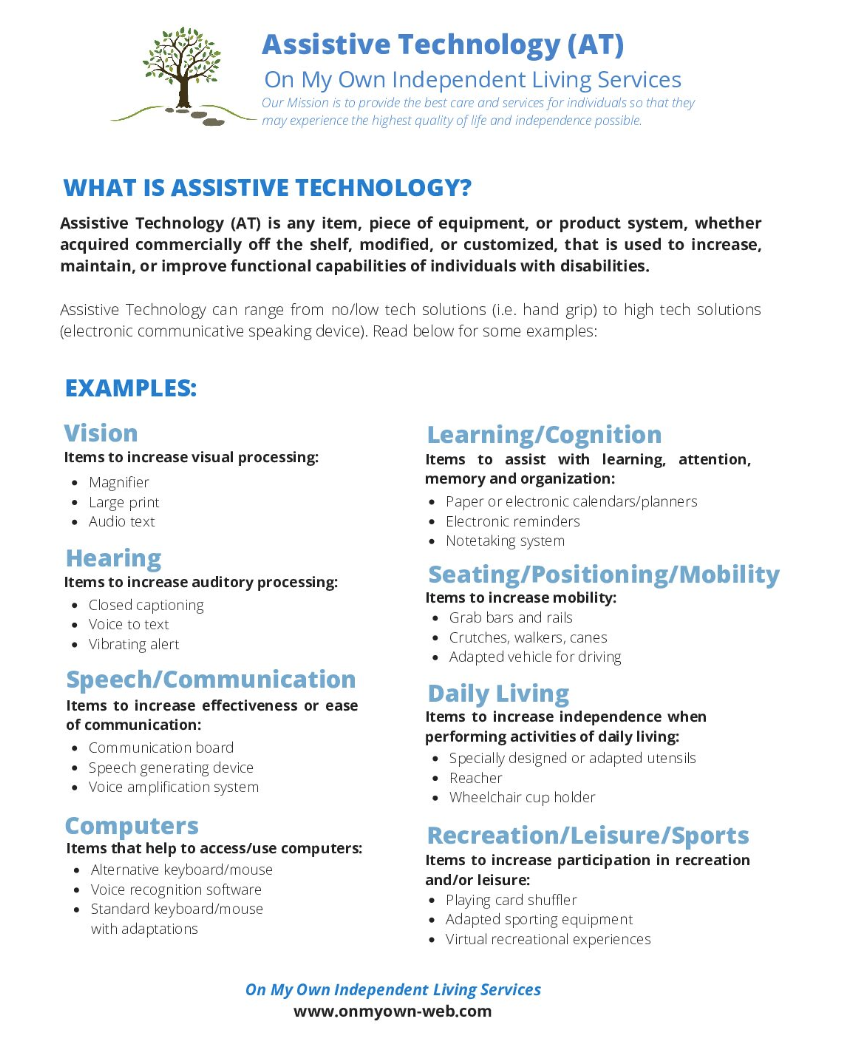Assistive Technology Services (ATS)
Watch a video on one of our clients and how assistive technology has improved her life.
Assistive Technology Services (ATS) is a new service being piloted to deliver assistive technology to adults with developmental disabilities that receive supportive services. Assistive technology refers to any item, equipment, or system—whether commercially available, modified, or custom-made—that helps enhance, maintain, or improve the functional abilities of individuals with disabilities.
Assistive technology might address a single or a multitude of needs such as:
Visual Support
Smart apps and programs can increase a device’s screen zoom or contrast. Many devices feature accessibility tools that utilize text-to-voice and voice commands allowing users to navigate technology vocally. AI integrated camera devices can take snapshots to locate objects such as chairs or doors.
Community Safety
Wearable technology can provide emergency assistance with a single button push or gesture that communicates to local emergency responders when individuals are not able to call for help. In some situations, like a fall, these services can be automatically called without interaction by the user.
Literacy and Communication
Assistive devices can use AI to read text, and identify the monetary value of dollar bills. Technology might also be used so that individuals can communicate directly with others by using their eyes to navigate keyboard screens.
Ambulation and Mobility
Ramps, rails, grab bars, wheelchairs, and lifts are all examples of assistive technology that aids in movement!
Home Safety
Stoves can be equipped with different sensors that detect smoke or excessive heat and provide alerts to staff or monitoring services. In some systems, when heat or smoke is detected the oven can be shut down remotely to help prevent fires.
Medication Support
Smart dispensers can help track medication quantities, provide reminders for refills, send out team alerts when a medication has been taken or skipped, and dispense medication doses.
Click HERE for an informational flyer about Assistive Technology Services.

